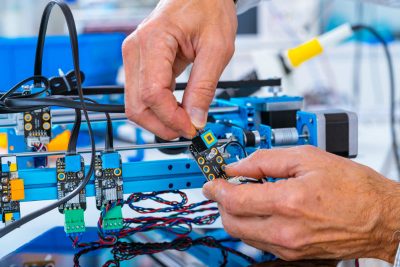
Renewable or sustainable technologies continue to advance, offering building owners increasing options to go green. For homeowners, previously unviable green options are now within reach. Now, more than ever, individuals and households can play a significant role in the quest to stop climate change. For this to become a viral movement, homeowners need to understand that it is within their power to make changes that stand in the face of climate change.
But first, what are renewable or sustainable home technologies? In a nutshell, these are the technologies that help homeowners use resources sustainably, reducing a home’s overall carbon footprint. To help provide more context to this conversation, we recently caught up with Jacob Gitman, a prominent scientist and a prolific entrepreneur based in Sunny Isles Beach, Florida, USA. Here are some excerpts from the conversation.
Self-Powering Buildings
Self-powering buildings are a marvel of modern sustainable technologies, says Jacob Gitman. Imagine a building that does not rely on the power grid to run. Such buildings employ technologies like solar and wind, and waste processing to generate enough power to run all operations. In theory, every building can be self-powering. But how about your home?
Turning your home into a self-powering building is possible. With technologies like solar panel roofing tiles, photovoltaic windows, and others, it is possible to gradually retrofit your home until it is entirely self-powering. The fantastic thing about such a self-powering home is that your home’s carbon footprint would also reduce to zero.
Smart Devices
Smart devices like thermostats can significantly influence the sustainability index of a home. Numerous studies have shown that poor heat management in homes accounts for millions of wasted watt-hours of energy supplied to residences. If this energy is somehow recovered, these energy savings can help reduce the amount of overall energy needed to power homes.
Using smart devices, you can algorithmically monitor the heat in your home so that your energy consumption matches your actual needs. Other smart devices that can help reduce energy consumption include LED bulbs, motion sensors, and others.
Green Insulation
Insulation is another way you can incorporate sustainable technologies into your home, says Jacob Gitman. Green insulation refers to using sustainable materials to insulate your home. This offers a two-fold sustainability solution. First, by properly from your home, you minimize the loss of heat, a significant factor in the overall amount of energy needed to heat a home.
Secondly, green insulation uses recycled materials like cotton and newspapers to insulate your home. Green insulation is a type of sustainable technology that tries to lower your energy consumption through innovative and sustainable insulation methods.
Water Efficiency
Water consumption is one of the more significant challenges that cities face today. Cities like El Paso, Phoenix, and Los Angeles are all in danger of running out of water. At a home level, this means water is a precious commodity that should be treated as such. Using smart water management technologies can help ensure a home is water efficient and does not over-exert environmental resources.
Some technologies that can be used at a home level include rainwater harvesting systems, water-saving toilets, WaterSense aerators, and others. For instance, the WaterSense technology can save you up to 700 gallons of water, per tap, each year. That is enough water to take upwards of 30 showers!
Last Words
While it often feels frustrating to see politicians drag their feet in enacting planet-savings laws, upgrading your home to sustainable and renewable technologies can help you play a part in saving the planet. The technologies mentioned here, and others are great steps any homeowner should take to make a difference. Moreover, through such grassroots initiatives, a movement can be born that leads to more homeowners taking a stand against climate change. “A future where every home is sustainable and carbon neutral is possible, but it starts with me and you the reader,” says Jacob Gitman.










